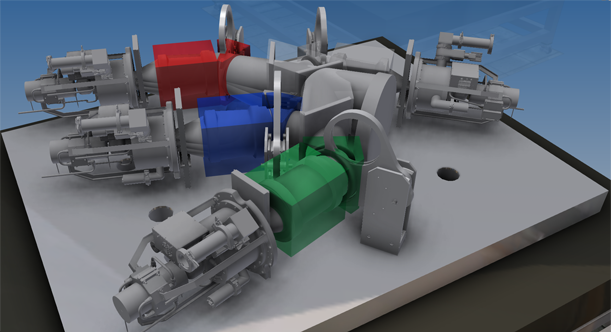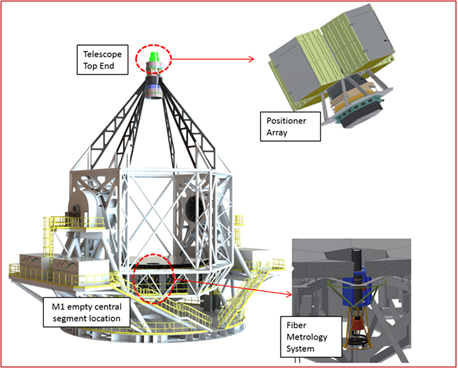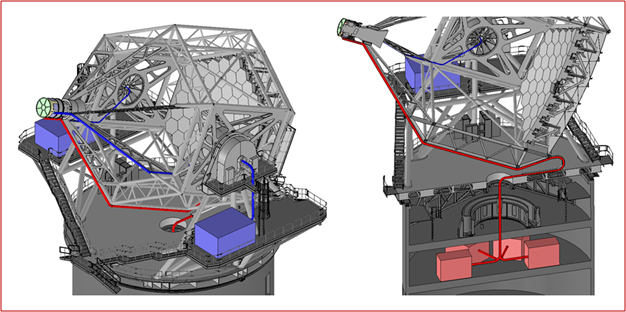Observatory
Instruments

HIGH RESOLUTION SPECTROGRAPHS
HR spectrographs must accomodate 2,084 spectra within a wavelength range from 360 to 900 nm, as delivered by 0.8″ diameter fibers. A three-arm design is considered and the wavelength range is divided into three segments, one per arm.
At wavelengths shorter than 500 nm, the required spectral resolution is R~40,000, in order to be able to study the many (weak) lines at blue wavelengths without being detrimentally affected by line blending. At wavelengths longer than 500 nm, the required spectral resolution is R~20,000, since here the effects of line blending are reduced and many of the lines of interest are relatively strong. Only relatively small “working windows” in wavelength range can be accessed at high resolution (approximately given by lc/30 at R=40,000 and lc/15 at R=20,000, where lc is the central wavelength of the working window).
LOW MODERATE RESOLUTION SPECTROGRAPHS


Fiber Positioner System
Sphinx, the Fiber Positioner System for MSE, is an evolution of a piezo-actuated tilting spine technology first designed and implemented in FMOS-Echidna (Subaru) and represents a mature, low risk, and high-performance solution to the MSE positioner requirements.
Sphinx includes two main components: the positioner array, which corresponds to an assembly of actuators with their support structure and electronics located at the top end of the telescope structure; and a fiber metrology system, located in the empty central segment position of the primary mirror.
The positioner array is located at the focal surface of MSE and is made of an arrangement of individual “spines”. These carry the FiTS fibers and are moved into position to collect light from science targets by piezo actuators. Sphinx provides full field coverage for all LMR and HR fibers simultaneously.
Fiber Transmission System
The Fiber Transmission System is the set of fibers that collect the light at the focal surface (when set to their position by the Fiber Positioner System) and deliver it to the LMR and HR spectrographs. Fibers are selected, sized and managed maintain the highest possible throughput for the overall MSE system.
High numerical aperture fibers (NA=0.26 – 0.28) capable of accepting the f/1.926 beam delivered by the telescope optics have been selected to avoid additional optics at the fiber input and incurring associated throughput losses. The fibers have an anti-reflection (AR) coating on output ends as the baseline.
Fibers are routed through the Observatory and over the full range of the telescope motion in two axes and the rotation of the field of view, with an emphasis on minimizing fiber stress during observations. This is to reduce the differential focal ratio degradation and far-field effects as the telescope moves across the sky, as well as to maintain uniform and stable throughput among the thousands of fibers.




